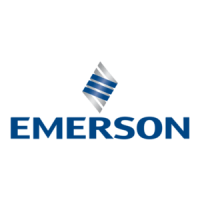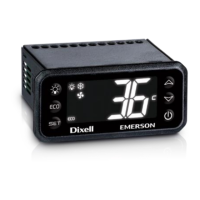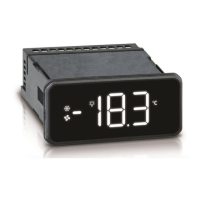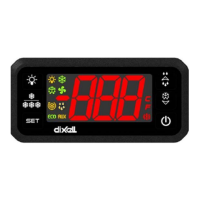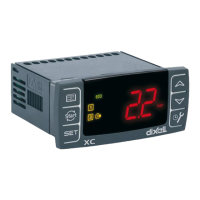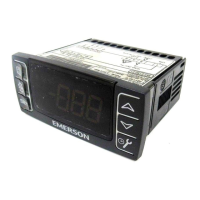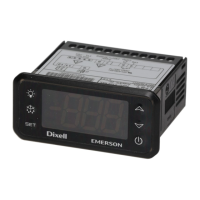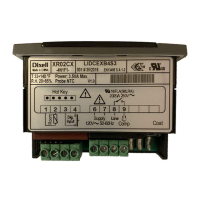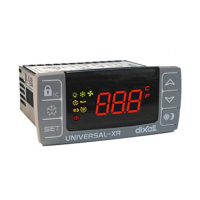Do you have a question about the Emerson Digitax ST and is the answer not in the manual?
| Brand | Emerson |
|---|---|
| Model | Digitax ST |
| Category | Controller |
| Language | English |
General safety information and warnings for using the drive.
Guidelines for the physical installation of the drive and its components.
Instructions for connecting the drive to the power supply and motor.
Essential steps for initial setup and operation of the drive.
Steps to get the motor running for the first time.
Using the SMARTCARD for drive configuration and data transfer.
Information on drive status, trips, alarms, and troubleshooting.
Covers warnings, cautions, electrical safety, system design, and personnel safety.
Guidelines for electrical installation, shock risk, isolation, stored charge, and motor safety.
Safety considerations for mechanical and electrical installation procedures.
Considerations for access, environmental protection, cooling, and fire protection.
Covers risks like electric shock, isolation, stored charge, and motor connections.
Diagram and specifications for connecting power terminals to the drive.
Details on drive overload protection for the motor and cable.
Explanation of the Safe Torque Off function and its safety integrity.
Comprehensive explanation of the Safe Torque Off function and its safety implications.
Setting access levels and user security for parameter modification.
Managing user security and displaying parameters based on values.
Diagram illustrating the speed feedback and control loop.
Diagram illustrating the torque control loop.
Parameters for acceleration/deceleration rates, reference selection, and current limit.
Parameters for current controller tuning and autotune functions.
Key parameters for motor control: poles, voltage, current, thermal filter, and status.
Setting user security levels and actions for trip detection.
Essential connections for drive control methods and feedback devices.
Wiring diagrams for serial, keypad, and terminal mode operation.
Step-by-step guide for initial drive setup, motor configuration, and autotune.
Parameter configuration for various encoder types and feedback devices.
Parameters for motor control: rated current, poles, and autotune functions.
Adjusting proportional, integral, and differential gains for speed controller tuning.
Configuring sync managers for PDO assignment in cyclic communications.
Details on saving parameters, node address, RUN state, PDOs, and SDO access.
Configuration details for RxPDO and TxPDO mappings in CoE protocol.
Overview of supported DSP-402 modes and Controlword object.
Statusword feedback, common profile features, and CoE state machine.
Details on modes of operation, stop codes, fault reactions, and status display.
Setup for interpolated position mode, including sub-modes and data records.
Parameters for setting target, demand, actual, and min/max velocity.
Parameters for target torque, motor rated current, actual current, and torque slope.
Description of homing methods, signal sources, and general definitions.
Configuration of homing source, freeze function, offset, method, speeds, and acceleration.
Setup for cyclic sync position mode, including supported objects and timing.
Modifying cyclic data handling tasks for optimized performance.
Procedures for reading, writing, erasing, and comparing data blocks.
Saving, auto-saving, and booting parameters using the SMARTCARD.
Troubleshooting common SMARTCARD trip errors and their diagnoses.
Interpreting status indications for boot, card transfer, and loading operations.
Logic diagram illustrating speed reference selection and scaling.
Logic diagram for programmable logic functions.
Information on drive status, trips, and alarm indications.
Logic diagrams for threshold detectors, variable selectors, and brake control.
Diagrams and descriptions of the drive's brake control functions.
Logic diagram for position control operations.
Information on identifying and configuring Solutions Modules.
Overview of advanced drive functions like reference modes, braking, torque, stop, and position.
Explanation of torque control modes including feed-forward and coiler/uncoiler.
Configuration of stop modes and behavior during line power supply loss.
Selecting predefined digital input routing macros for sequencer control.
Details on position control modes and handling a spinning motor.
Using digital I/O for a fast disable function to complement Safe Torque Off.
Detailed list of trip codes, their meanings, and diagnostic steps.
Information on network loss, operating status, bootloader, trip codes, and error handling.
Error codes and diagnostic information for various Solutions Modules (Automation, Fieldbus, SLM).
